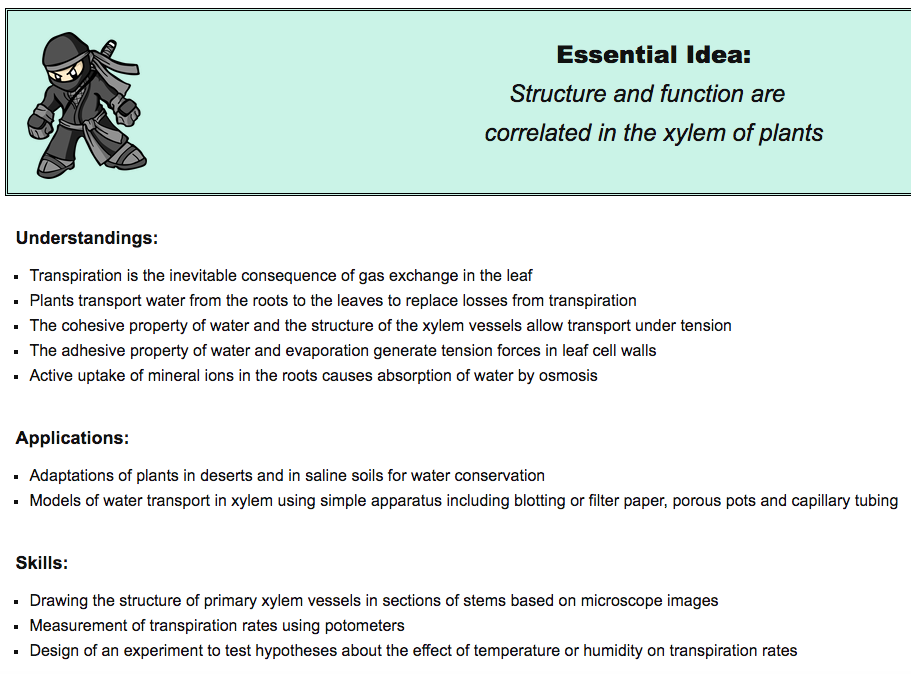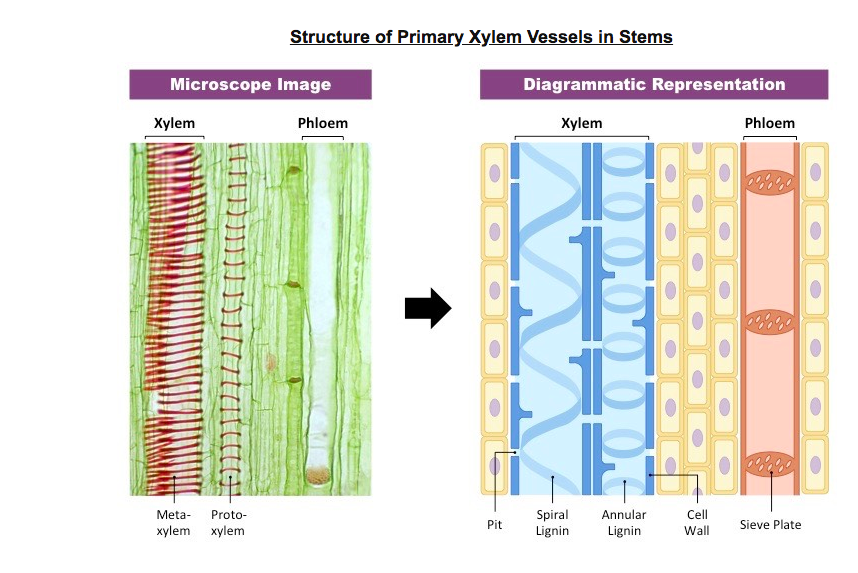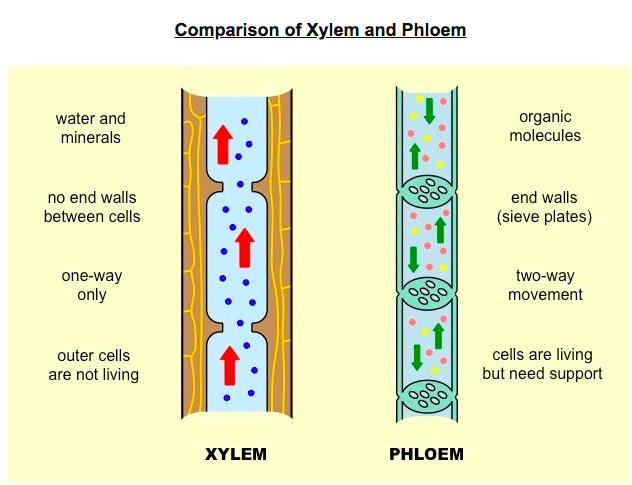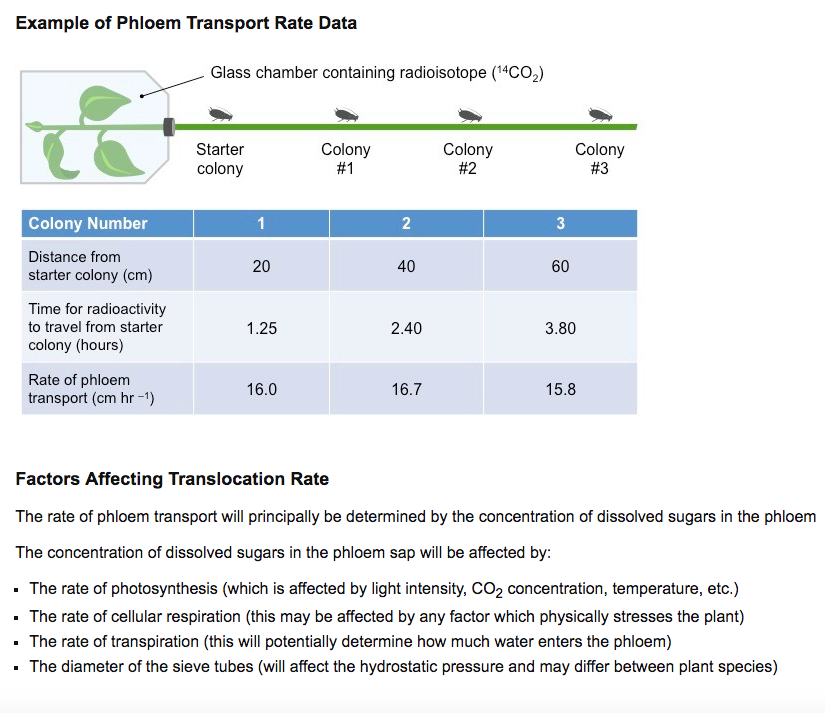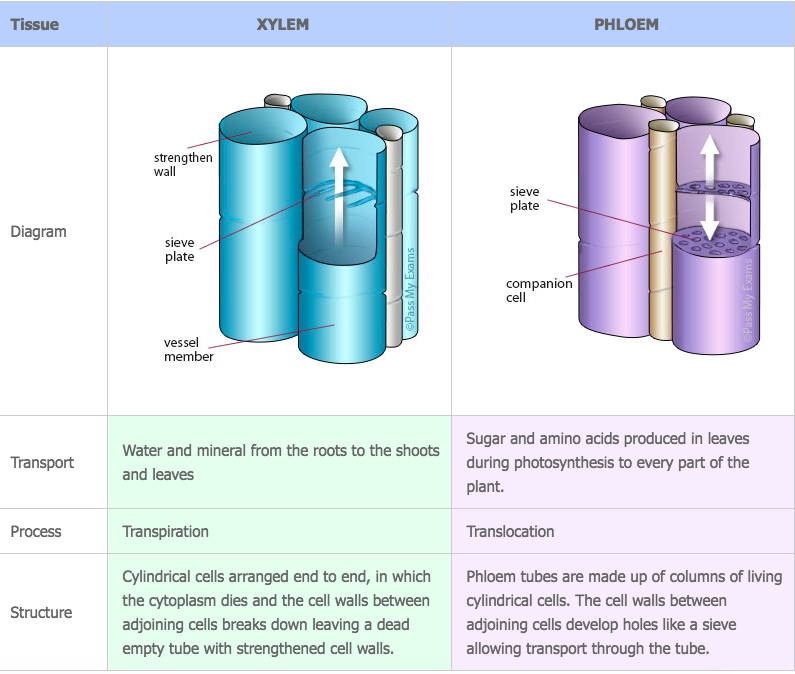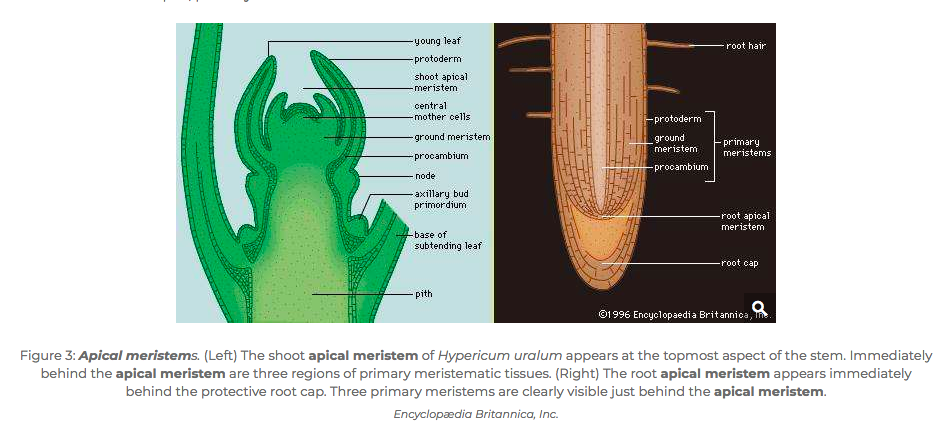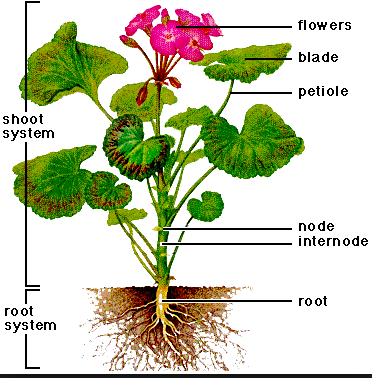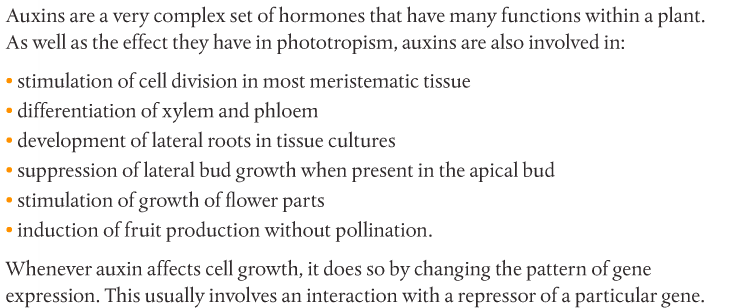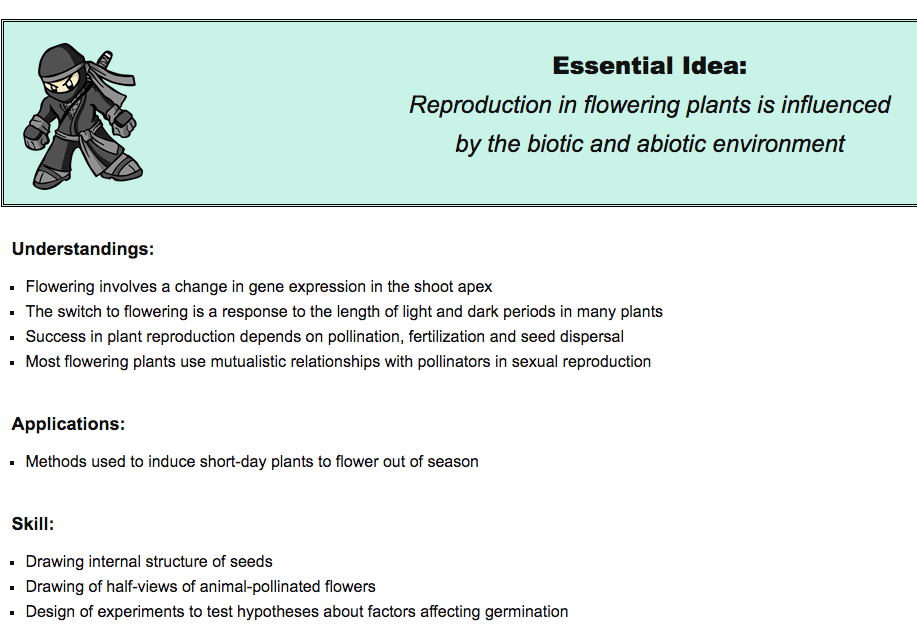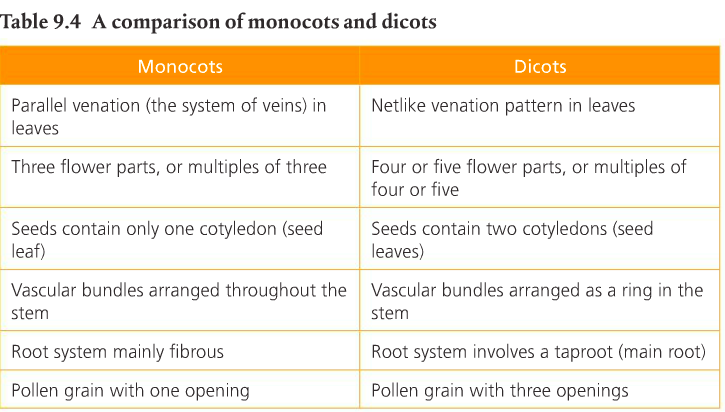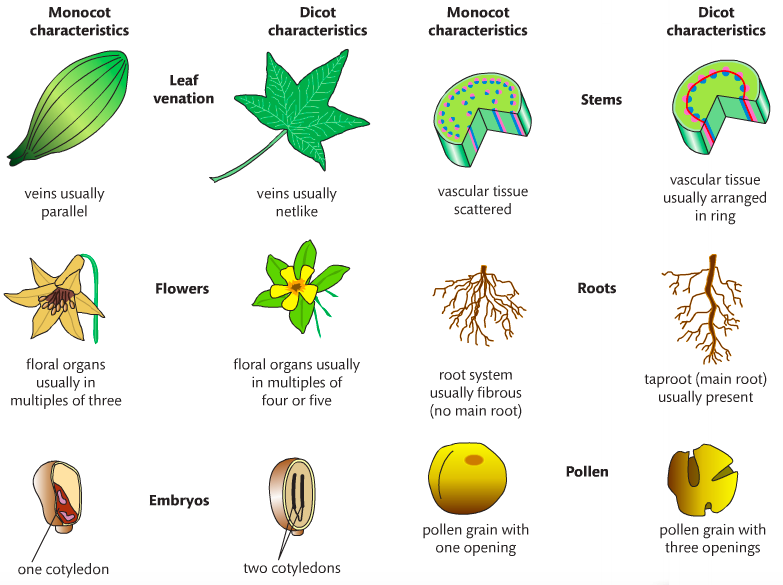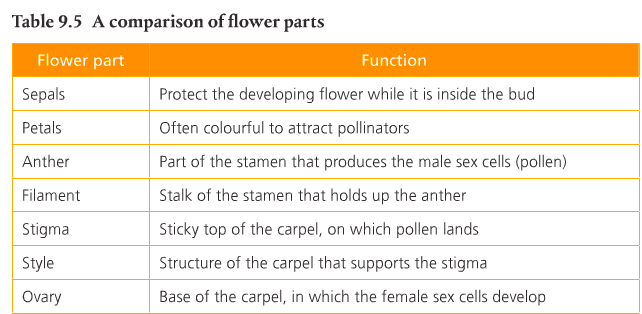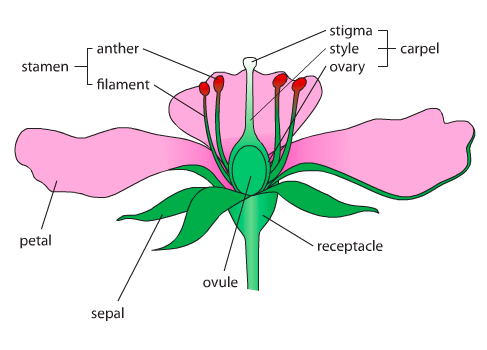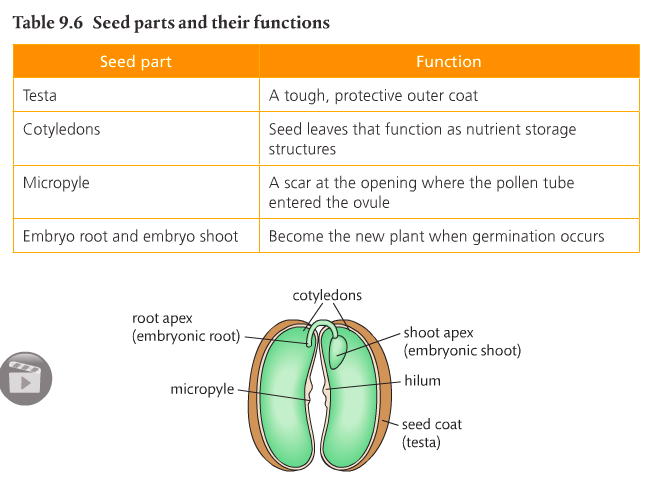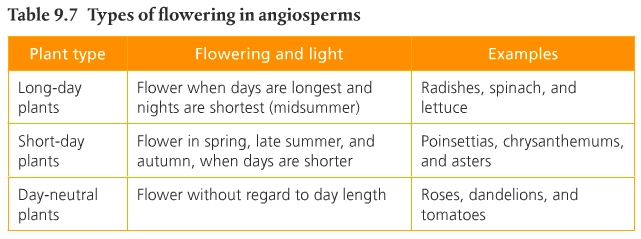Workbook Lessons:
9.1: #234-237
9.2: #240-242
9.3: #243-245
9.4: #246-250
Supplemental Links: IB Unit 9 Plant Biology BioNinja Plant Tissues
Slideshare Below:
9.1: #234-237
9.2: #240-242
9.3: #243-245
9.4: #246-250
Supplemental Links: IB Unit 9 Plant Biology BioNinja Plant Tissues
Slideshare Below:
Mission 1: Plant Highways, Exit 1: Xylem
Mission Objectives: You should be able to...
1. Draw the structure of primary xylem vessels in sections of stems based on microscope images.
2. Measurement of transpiration rates using potometers.
3. Design an experiment to test hypotheses about the effect of temperature or humidity on transpiration rates.
The structure of xylem vessels allows them to transport water inside plants efficiently. Xylem vessels are long continuous tubes strengthened by lignin so that they can withstand low pressures without collapsing. The pressure inside xylem cells is usually lower than atmospheric pressure. Water is attracted to the cellulose and other substances in the cell walls, which causes adhesion.
The low pressure generates a pulling force that is transmitted through the water in the xylem vessels down the stem and to the ends of the xylem in the roots. This is called the transpiration pull and is strong enough to suck the water upwards, against gravity, to the top of the plant in question. This is a passive process. The pulling of water upwards in xylem depends on the cohesion that exists between water molecules.
Transpiration is the process by which moisture is carried through plants from roots to small pores on the underside of leaves, where it changes to vapor and is released to the atmosphere (USGS, 2016). Transpiration is essentially evaporation of water from plant leaves. Plants minimize water loss through stomata using guard cells. These are the cells that are found in pairs, one on either side of a stoma. Guard cells regulate the opening and closing of a stoma.
Image courtesy of bioninja.
Mission Objectives: You should be able to...
1. Draw the structure of primary xylem vessels in sections of stems based on microscope images.
2. Measurement of transpiration rates using potometers.
3. Design an experiment to test hypotheses about the effect of temperature or humidity on transpiration rates.
The structure of xylem vessels allows them to transport water inside plants efficiently. Xylem vessels are long continuous tubes strengthened by lignin so that they can withstand low pressures without collapsing. The pressure inside xylem cells is usually lower than atmospheric pressure. Water is attracted to the cellulose and other substances in the cell walls, which causes adhesion.
The low pressure generates a pulling force that is transmitted through the water in the xylem vessels down the stem and to the ends of the xylem in the roots. This is called the transpiration pull and is strong enough to suck the water upwards, against gravity, to the top of the plant in question. This is a passive process. The pulling of water upwards in xylem depends on the cohesion that exists between water molecules.
Transpiration is the process by which moisture is carried through plants from roots to small pores on the underside of leaves, where it changes to vapor and is released to the atmosphere (USGS, 2016). Transpiration is essentially evaporation of water from plant leaves. Plants minimize water loss through stomata using guard cells. These are the cells that are found in pairs, one on either side of a stoma. Guard cells regulate the opening and closing of a stoma.
Image courtesy of bioninja.
Below is an example of how to draw a xylem.
Water is absorbed into root cells by osmosis. This happens because the solute concentration inside the root cells is greater than that in the water in the soil. The solutes in the root cells and the soil are mineral ions. These concentration gradients are established by active transport, using protein pumps for each type of ion the plant requires. Mineral ions can only be absorbed by active transport if they make contact with an appropriate pump protein.
Plants transport water from root to leaves to replace losses from transpiration. See Figure 11 on page 409. Be able to explain the pathway of water from the root to the leaf.
Let's talk about the structure of a leaf.
Plants transport water from root to leaves to replace losses from transpiration. See Figure 11 on page 409. Be able to explain the pathway of water from the root to the leaf.
Let's talk about the structure of a leaf.
One of the things you have to know is how to use a potometer to measure transpiration. We don't have potometers, but here's a video to show you how one works. I'm trying to figure out if we can construct a bootleg potometer.
We can't construct an actual potometer, but you have to learn how to analyze experimental data. So we will do Lesson #238 in class today. You will need your workbook and access to Excel or Google Spreadsheet. Answer the questions and we'll discuss.
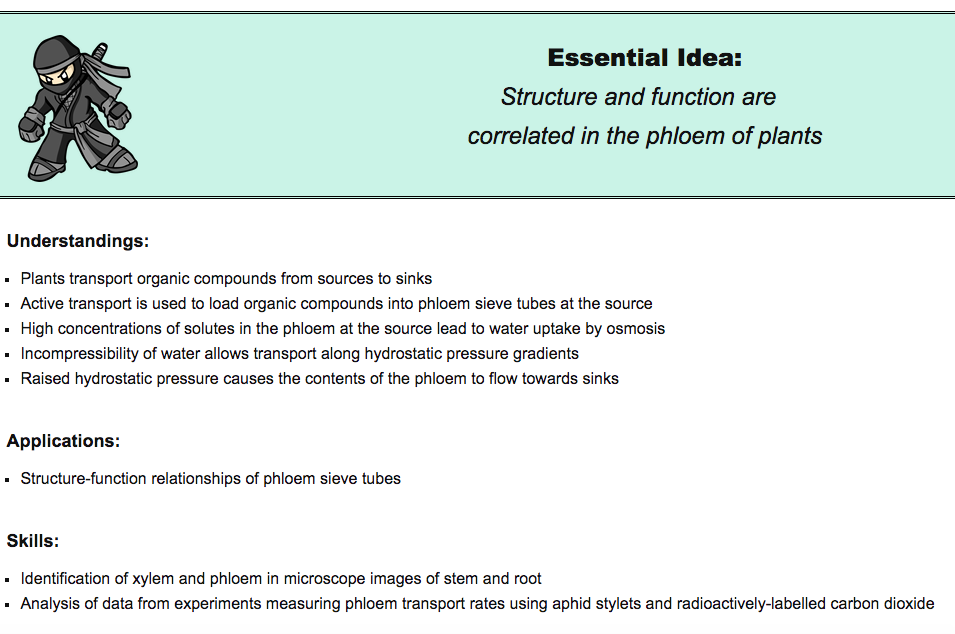
Mission 2: Plant Highways, Exit 2: Phloem
Mission Objectives: You should be able to...
1. Analyze data from experiments measuring phloem transport rates using aphid stylets and radioactively-labeled carbon dioxide.
2. Identification of xylem and phloem in microscope images of stem and root.
3. Describe and explain the structure-function relationship of phloem sieve tubes.
Phloem tissue is found throughout plants, including stems, roots & leaves. Phloem are composed of sieve tubes, which are themselves composed of columns of specialized cells. Individual sieve tube cells are separated by perforated walls called sieve plates.
Phloem transports organic compounds throughout the plant. The transport of organic solutes in a plant is called translocation. Phloem links parts of the plant that need a supply of sugars and other solutes such as amino acids to other parts that have a surplus. See Table 1 on page 413. Sources are areas where sugars and amino acids are loaded into the phloem and sinks are areas where the sugars and amino acids are unloaded and used.
Image courtesy of Bioninja.
Mission Objectives: You should be able to...
1. Analyze data from experiments measuring phloem transport rates using aphid stylets and radioactively-labeled carbon dioxide.
2. Identification of xylem and phloem in microscope images of stem and root.
3. Describe and explain the structure-function relationship of phloem sieve tubes.
Phloem tissue is found throughout plants, including stems, roots & leaves. Phloem are composed of sieve tubes, which are themselves composed of columns of specialized cells. Individual sieve tube cells are separated by perforated walls called sieve plates.
Phloem transports organic compounds throughout the plant. The transport of organic solutes in a plant is called translocation. Phloem links parts of the plant that need a supply of sugars and other solutes such as amino acids to other parts that have a surplus. See Table 1 on page 413. Sources are areas where sugars and amino acids are loaded into the phloem and sinks are areas where the sugars and amino acids are unloaded and used.
Image courtesy of Bioninja.
Active transport is used to load organic compounds into phloem sieve tubes at the source. Sucrose is the most prevalent solute in tree sap. It is not as readily available for plant tissues to metabolize directly in respiration and therefore makes a good transport form of carbohydrate as it will not be metabolized during transport.
Phloem transport using aphid stylets. Aphids are insects that feed on the sap extracted from phloem. Their feeding tubes are called stylets. Pages 417-420 discuss aphid stylet experiments. Read and work your way through the DBQs.
Below is some sample data from Bioninja.
Below is some sample data from Bioninja.
Go here to compare and contrast phloem and xylem tissue. The below image comes from passmyexams.co.uk.
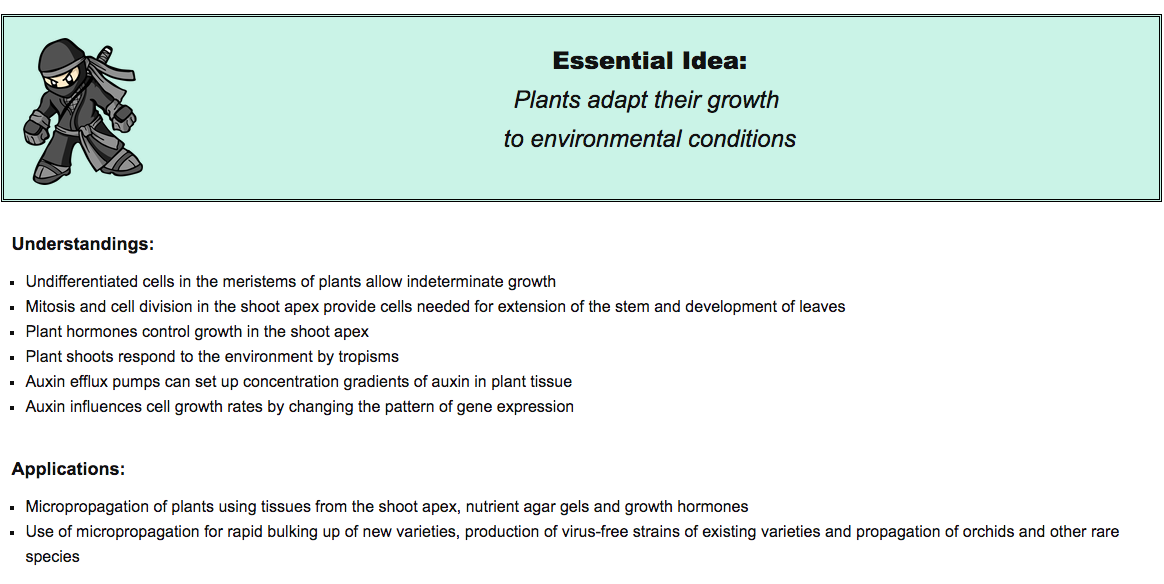
Mission 3: Growth
Mission Objectives. You should be able to...
1. Explain how plants grow.
2. Describe the role of mitosis in stem extension and leaf development.
3. Define "micropropogation."
4. Explain the role of auxins in plant growth
Growth in plants is confined to regions known as meristems. Meristems are composed of undifferentiated cells that are undergoing mitosis. Apical meristems are found at the tips of stems and roots. The root apical meristem is responsible for the growth of the root and the shoot apical meristem is at the tip of the stem. Shoot growth is a tad more complicated than root growth. Details are on page 423.
Mitosis and cytokinesis in the shoot apex (tip) provide cells needed for extension of the stem and development of leaves. Cells in meristem tissue are small and go through cell division repeatedly to produce more cells via mitosis and cytokinesis. These new cells absorbed nutrients and water and therefore increase in volume and mass.
Each apical meristem can give rise to additional meristems including protoderm, procambrium and ground meristem. These give rise to different tissues. Protoderm turns into epidermis, procambrium becomes vascular tissue, and ground becomes pith (that white stuff that you peel off oranges and other citrus).
Image from brittanica.com.
Mission Objectives. You should be able to...
1. Explain how plants grow.
2. Describe the role of mitosis in stem extension and leaf development.
3. Define "micropropogation."
4. Explain the role of auxins in plant growth
Growth in plants is confined to regions known as meristems. Meristems are composed of undifferentiated cells that are undergoing mitosis. Apical meristems are found at the tips of stems and roots. The root apical meristem is responsible for the growth of the root and the shoot apical meristem is at the tip of the stem. Shoot growth is a tad more complicated than root growth. Details are on page 423.
Mitosis and cytokinesis in the shoot apex (tip) provide cells needed for extension of the stem and development of leaves. Cells in meristem tissue are small and go through cell division repeatedly to produce more cells via mitosis and cytokinesis. These new cells absorbed nutrients and water and therefore increase in volume and mass.
Each apical meristem can give rise to additional meristems including protoderm, procambrium and ground meristem. These give rise to different tissues. Protoderm turns into epidermis, procambrium becomes vascular tissue, and ground becomes pith (that white stuff that you peel off oranges and other citrus).
Image from brittanica.com.
Auxins are hormones that have a broad range of functions including initiating the growth of roots, influencing the development of fruits, and regulating leaf development. Indole-3-acetic acid (IAA) is the most common auxin. You should know the relationship between IAA concentration and plant growth.
Plants respond to the environment via phototropism and gravitropism. Phototropism is when plants turn towards the sunlight. Stems grow towards the brightest light source, causing them to bend. In the absence of sunlight, they grow upwards, against gravity. Growth in response to gravitational force is called gravitropism.
If the plant is exhibiting phototropism, then auxin is transported laterally from the side with brighter light to the side that is more shaded. Higher concentrations of auxin on the shady side of the stem causes greater growth on that side so the stem grows in a curve towards the light source. Gravitropism is also auxin-dependent. The pattern of auxin effect is opposite to what happens in the shoot. In the shoot, auxin promotes elongation but in the root, auxin inhibits elongation.
Plants respond to the environment via phototropism and gravitropism. Phototropism is when plants turn towards the sunlight. Stems grow towards the brightest light source, causing them to bend. In the absence of sunlight, they grow upwards, against gravity. Growth in response to gravitational force is called gravitropism.
If the plant is exhibiting phototropism, then auxin is transported laterally from the side with brighter light to the side that is more shaded. Higher concentrations of auxin on the shady side of the stem causes greater growth on that side so the stem grows in a curve towards the light source. Gravitropism is also auxin-dependent. The pattern of auxin effect is opposite to what happens in the shoot. In the shoot, auxin promotes elongation but in the root, auxin inhibits elongation.
From the Pearson text:
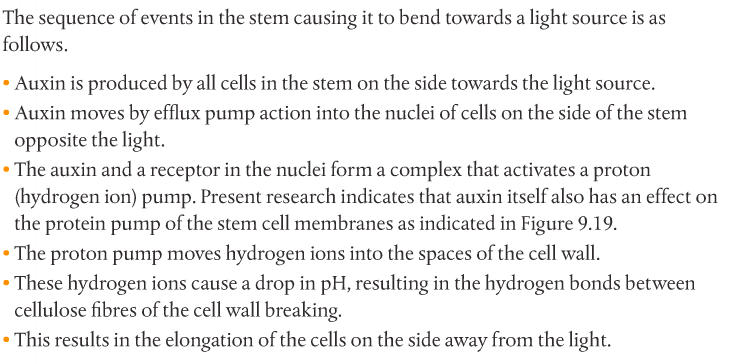
Mission 4: Baby-Making Greens
Mission Objective. You should be able to...
1. Draw internal structure of seeds.
2. Draw half-views of animal-pollinated flowers.
3. Design an experiment to test hypotheses about factors affecting germination.
4. Explain the difference between pollination and fertilization.
Flowering plants are called angiosperms. There are two classes of angiosperms: monocotyledons (monocot) and dicotyledons (dicot). Monocots have one seed leaf and dicots have two. Below are comparisons of monocots and dicots from the Pearson text.
Mission Objective. You should be able to...
1. Draw internal structure of seeds.
2. Draw half-views of animal-pollinated flowers.
3. Design an experiment to test hypotheses about factors affecting germination.
4. Explain the difference between pollination and fertilization.
Flowering plants are called angiosperms. There are two classes of angiosperms: monocotyledons (monocot) and dicotyledons (dicot). Monocots have one seed leaf and dicots have two. Below are comparisons of monocots and dicots from the Pearson text.
Continued research has refined these classifications but for this class, we will focus on monocots and dicots. In both types, animal-pollinated flowers have the same parts in common. The entire female part of the flower is called the carpel. The entire male part of the flower is called the stamen. Meiosis occurs in the stamen and carpel to produce gametes.
Put a sketch of the flower in your notes.
There are four types of flowers: (1) complete, (2) incomplete, (3) staminate, and (4) carpellate. Define each of these types and provide an example.
Put a sketch of the flower in your notes.
There are four types of flowers: (1) complete, (2) incomplete, (3) staminate, and (4) carpellate. Define each of these types and provide an example.
All plants show two different generations in their life cycle. There is the gametophyte generation (GG), which is haploid, and the sporophyte generation (SG), which is diploid. This process is called alternation of generations. They are so named due to the reproductive cells they produce.
GG produces plant gametes by mitosis. SG produces spores by meiosis. If you were looking at a flowering plant such as a cherry tree, what you are seeing is the sporophyte generation. The tree grew from a zygote and produced new cells via mitosis. When the tree produces flowers, haploid spores are formed and develop into haploid bodies referred to as gametophytes. Sperm form within male gametophytes and eggs form within female gametophytes.
On your own, describe and explain the differences between pollination and fertilization.
GG produces plant gametes by mitosis. SG produces spores by meiosis. If you were looking at a flowering plant such as a cherry tree, what you are seeing is the sporophyte generation. The tree grew from a zygote and produced new cells via mitosis. When the tree produces flowers, haploid spores are formed and develop into haploid bodies referred to as gametophytes. Sperm form within male gametophytes and eggs form within female gametophytes.
On your own, describe and explain the differences between pollination and fertilization.
Seeds are the means by which an embryo can be dispersed to distant locations. It is a protective structure for the embryo. Dicot seeds contain the parts described below. If conditions are favorable, the seed will germinate (above video). This is the development of a seed into a plant. Favorable conditions include (1) water, to rehydrate the seed tissue, (2) oxygen, to allow for aerobic respiration, and (3) appropriate temperature, for enzyme action.
On your own, answer the following: Why is light so important to plants? This is not as simple a question as it looks. You need to address the issue of flowering plants in particular.
